
Trinidad and Tobago , formerly divided as two separate colonies, issued revenue stamps from 1879 to around 1991. [1]

Trinidad and Tobago , formerly divided as two separate colonies, issued revenue stamps from 1879 to around 1991. [1]
Tobago first issued revenues in 1879. A set of six values from 1d to £1 was issued, and in 1884 they were reprinted in a different watermark. A third set of six was issued in 1890 with the same values in new colours. [1] Some Tobago revenue stamps were also valid for postal use pending the delivery of stamps marked POSTAGE. [2] Tobago used Trinidad revenues from 1896 until joint issues appeared in 1908.
The first Trinidad revenue was issued in 1887 and consisted of a 1d postage stamp of 1883 overprinted FEE. Other values were prepared but none were issued, since later that year a new set with values from ½d to 5s was issued. A year later 10s and £1 values were added to this series (by surcharging 5s stamps). In 1890 postage due stamps were overprinted FEE as well, but these are extremely rare. The 1s and 5s values of the 1887 Fee set also exist further overprinted FREE for use as Free Fee stamps. In 1890 postage stamps with the same face values were overprinted FREE FEE at once and replaced the 1887 issue. Trinidad also issued a customs stamp to pay the duty on opium in the 1880s.
Trinidad revenues were also used in Tobago from 1896 to 1908.

The first revenue issue for both islands was issued in 1908. It consisted of British embossed revenues overprinted TRINIDAD & TOBAGO in three lines. Similar issues continued to be issued until 1925, when new issues with the overprint in two lines were produced. In 1935 new designs in decimal currency were issued, this time not overprinted on British revenues but directly inscribed TRINIDAD AND TOBAGO. Later that year three stamps similar to postage issues but inscribed REVENUE were also issued. In 1964, some embossed revenues from the 1935 issue were overprinted with new values.
The first National Insurance stamps of Trinidad and Tobago were issued in the 1970s. These continued to be used until several new sets appeared in the 1980s with a new design. Most National Insurance stamps are only known as mint examples or with a Specimen perfin. Both of these originate from the printer's archive. Therefore, it is not known for certain which of the stamps, if any, were actually issued for use. [3]

Revenue stamps of Malta were first issued in 1899, when the islands were a British colony. From that year to 1912, all revenue issues were postage stamps overprinted accordingly, that was either done locally or by De La Rue in London. Postage stamps also became valid for fiscal use in 1913, so no new revenues were issued until 1926–30, when a series of key type stamps depicting King George V were issued. These exist unappropriated for use as general-duty revenues, or with additional inscriptions indicating a specific use; Applications, Contracts, Registers or Stocks & Shares. The only other revenues after this series were £1 stamps depicting George VI and Elizabeth II. Postage stamps remained valid for fiscal use until at least the 1980s.

Revenue stamps of the United Kingdom refer to the various revenue or fiscal stamps, whether adhesive, directly embossed or otherwise, which were issued by and used in the Kingdom of England, the Kingdom of Great Britain, the United Kingdom of Great Britain and Ireland and the United Kingdom of Great Britain and Northern Ireland, from the late 17th century to the present day.

South Africa issued revenue stamps from 1910 to 2009. Apart from national issues various provinces of the country issued revenues from around 1855 to c. 1970.
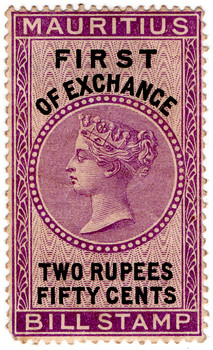
Mauritius issued revenue stamps from 1 March 1869 to 1904. There were various types of fiscal stamps for different uses.
The Australian state of Western Australia issued revenue stamps from 1881 to 1973. There were various types for different taxes.
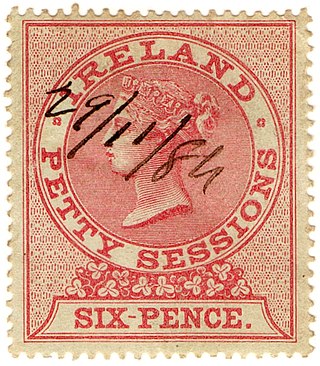
Revenue stamps of Ireland refer to the various revenue or fiscal stamps, whether adhesive, directly embossed or otherwise, which have been used on the island of Ireland since 1774. These include issues by the Kingdom of Ireland, issues by the United Kingdom specifically for use in Ireland or briefly Southern Ireland, and issues of an independent southern Ireland since 1922. Revenue stamps of Northern Ireland were also issued from 1921 to the 1980s, but they are not covered in this article.

The island of Cyprus first issued revenue stamps in 1878 and continues to do so to this day. The Turkish Republic of Northern Cyprus also issues its own revenue stamps.

Revenue stamps of British Guiana refer to the various revenue or fiscal stamps, whether adhesive or directly embossed, which were issued by British Guiana prior to the colony's independence as Guyana in 1966. Between the 1860s and 1890s, the colony issued Inland Revenue and Summary Jurisdiction stamps, while revenue stamps and dual-purpose postage and revenue stamps were issued during the late 19th and 20th centuries. In around the 1890s or 1900s, British Guiana possibly issued stamps for taxes on medicine and matches, but it is unclear if these were actually issued. Guyana continued to issue its own revenue stamps after independence.
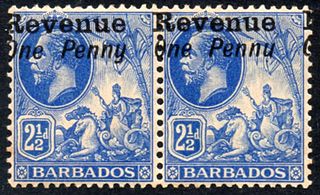
The island of Barbados first issued revenue stamps in 1916. There were various types of fiscal stamps for different taxes.

The South African Republic (ZAR), later known as Transvaal issued revenue stamps from 1875 to around 1950. There were a number of different stamps for several taxes.
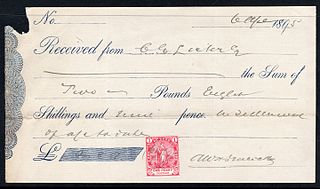
Cape of Good Hope issued revenue stamps from 1864 to 1961. There were a number of different stamps for several taxes.

New Zealand first issued revenue stamps on 1 January 1867 and their general use continued until the early 1950s. The only Revenue Stamp series still in use today is the Game Bird Habitat stamp which is used for payment of the Gun License for the duck shooting season which begins the first weekend of May. There were various types of fiscal stamps for different taxes.

Kenya, formerly known as British East Africa issued revenue stamps since 1891. There were numerous types of revenue stamps for a variety of taxes and fees. Also valid for fiscal use in Kenya were postage stamps issued by the following entities:
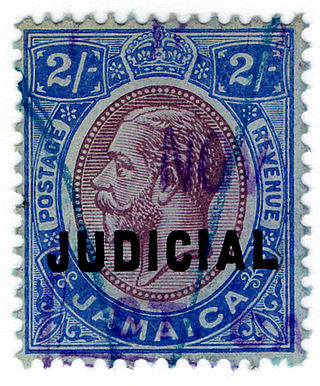
Revenue stamps of Jamaica were first issued in 1855. There were various types of fiscal stamps for different taxes.
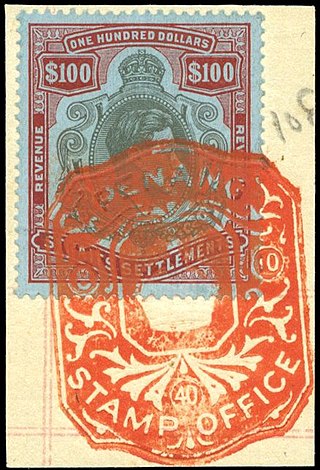
Malaysia first issued revenue stamps as the Straits Settlements in 1863, and continues to do so to this day. Over the years, a number of entities in modern Malaysia have issued revenue stamps.

Over the years various Malay States issued their own revenue stamps. Now most states use Malaysian revenue stamps, except for Singapore which is independent and no longer uses revenue stamps.
Revenue stamps of Seychelles were first issued in 1893, when the islands were a dependency of the British Crown Colony of Mauritius. The first stamps were Mauritius Internal Revenue stamps depicting Queen Victoria overprinted for use in Seychelles, and Bill stamps were also similarly overprinted. Postage stamps depicting Victoria or Edward VII were overprinted for fiscal use at various points between 1894 and 1904, while surcharges on Bill stamps were made in around 1897–98.
Few revenue stamps of Nigeria and its predecessor states have been issued, since most of the time dual-purpose postage and revenue stamps were used for fiscal purposes. The first revenue-only stamps were consular stamps of the Niger Coast Protectorate and the Southern Nigeria Protectorate, which were created by overprinting postage stamps in 1898 and 1902 respectively. The Northern Nigeria Protectorate did not issue any specific revenue stamps, but a £25 stamp of 1904 could not be used for postal purposes due to its extremely high face value.

A postage and revenue stamp, sometimes also called a dual-purpose stamp or a compound stamp, is a stamp which is equally valid for use for postage or revenue purposes. They often but not always bore an inscription such as "Postage and Revenue". Dual-purpose stamps were common in the United Kingdom and the British Empire during the 19th and 20th centuries, and they are still used in some countries as of the early 21st century.
Revenue stamps of Guyana refer to the various revenue or fiscal stamps, whether adhesive, directly embossed or otherwise, which have been issued by Guyana since its independence in 1966. Prior to independence, the country was known as British Guiana, and it had issued its own revenue stamps since the 19th century. Guyana used dual-purpose postage and revenue stamps until 1977, and it issued revenue-only stamps between 1975 and the 2000s. The country has also issued National Insurance stamps, labels for airport departure tax and excise stamps for cigarettes and alcohol.